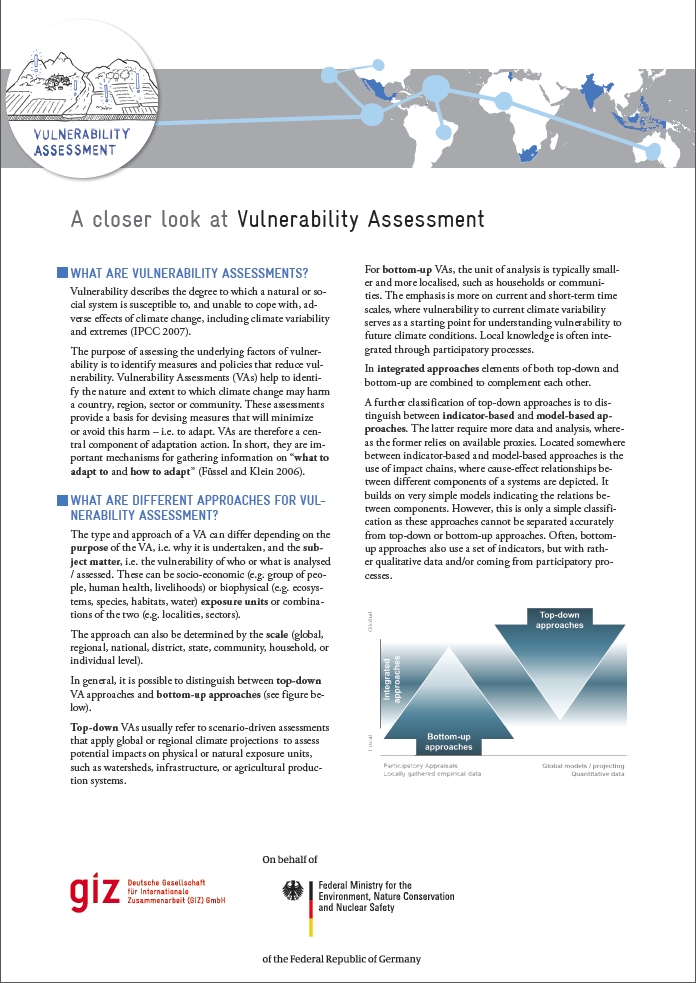A closer look at Vulnerability Assessment
What are Vulnerability Assessments?
Vulnerability describes the degree to which a natural or social system is susceptible to, and unable to cope with, adverse effects of climate change, including climate variability and extremes (IPCC 2007).
The purpose of assessing the underlying factors of vulnerability is to identify measures and policies that reduce vulnerability. Vulnerability Assessments (VAs) help to identify the nature and extent to which climate change may harm a country, region, sector or community. These assessments provide a basis for devising measures that will minimize or avoid this harm – i.e. to adapt. VAs are therefore a central component of adaptation action. In short, they are important mechanisms for gathering information on “what to adapt to and how to adapt” (Füssel and Klein 2006).
What are different approaches for Vulnerability Assessment?
The type and approach of a VA can differ depending on the purpose of the VA, i.e. why it is undertaken, and the subject matter, i.e. the vulnerability of who or what is analysed / assessed. These can be socio-economic (e.g. group of people, human health, livelihoods) or biophysical (e.g. ecosystems, species, habitats, water) exposure units or combinations of the two (e.g. localities, sectors).














